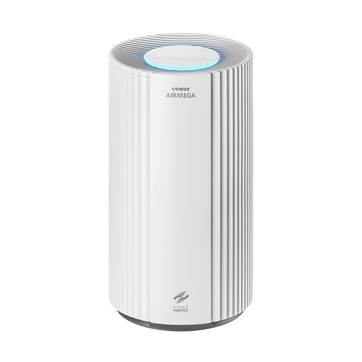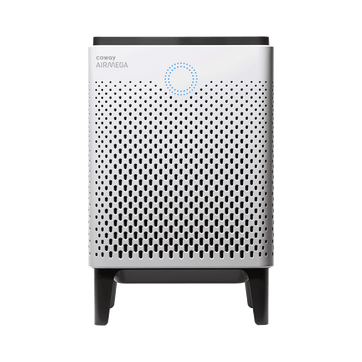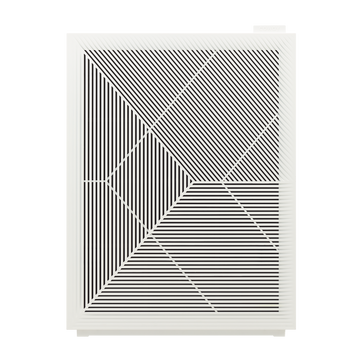
A look back at the year in air
It’s been quite a year for air. As we begin 2019, it seems like a good time to look back at last year’s air-related news highlights.
Wildfires devastate California and other areas
The Woolsey and Camp wildfires ravaged parts of California, with heavy smoke enveloping many areas. Wildfire smoke created severe air pollution levels with serious health effects, as it filled the air with harmful particles that can cause everything from coughing to cardiac disease. But California wasn’t the only area to experience wildfires. British Columbia, Seattle and other areas also experienced dangerous blazes.
Can poor air quality cause crime?
New evidence suggested that air quality may affect our behavior, including criminal activity. UK researchers studied 1.8 million crimes over two years and compared that to pollution data in London. Their finding: a 10 point increase in the air quality index correlated with a nine percent boost in the rate of petty crimes such as shoplifting and pickpocketing. By way of explanation, researchers pointed to the connection between polluted air and higher levels of stress and anxiety which, in turn, can lead to increases in criminal behavior. Specifically, poor air quality can boost the stress hormone cortisol, impacting risk perception and causing a rise in criminal activity.
New methods for detecting air pollution
A new generation of portable air sensors can be placed in backyards and inside homes, providing real-time information about air quality. For example, the EPA is testing portable air monitors installed in park benches that measure ozone and fine particle pollution, along with weather conditions. The next step: developing low-cost air monitoring devices that are wearable. For example, engineers at Arizona State University are testing a wearable sensor that detects hydrocarbons, volatile organic compounds and acid vapors. It wirelessly transmits location, time and exposure data to a smartphone with an application that stores, displays and transfers the information to researchers.
Bad air leads to more hospitalizations
Research provided more evidence that air pollution is associated with increases in hospitalizations. Researchers at Harvard University focused on acute respiratory distress syndrome (ARDS), a rapidly progressive disease in critically ill patients suffering from conditions such as pneumonia and traumatic injury. Because the elderly are particularly at risk for the disease, researchers studied nearly 30 million Medicare beneficiaries discharged from U.S. hospitals from 2000 through 2012 to find a connection between ARDS sufferers and air pollution. They found a significant association between annual increases in particulate matter and ozone concentrations, and in hospital admission rates for ARDS among elderly patients.
WHO air quality ratings
Ratings from the WHO, or World Health Organization, the United Nations’ agency focused on international public health, revealed the areas in the U.S. with the worst and best air quality. The top five locations for low air quality were mostly in California, though Hawaii also made an appearance. The cleanest air could be found in Sinclair, Wyoming and Wasilla, Alaska. The research measured the annual mean concentrations of particulate matter, tiny particles emitted from such sources as cars and power plants, in cities around the world.
How can you keep the air in your own home clean? One way is to install a smart air purifier with a HEPA filter, like Coway Airmega, which can eliminate up to 99.97 percent of harmful particulate matter from the air.
Disclaimers
1Coway air purifiers has been proven to trap dust, pollen, dander, viruses and bacteria in the air based on KCL (Korea Conformity Laboratories) testing.They have been tested in a 30㎥ size chamber according to the Korea Air Cleaning Association standard (SPS-KACA 002-132:2022 Modified) to measure the 0.01㎛ size of particle removal rate. It was tested on maximum airflow speed in normal room temperature and humidity conditions. The performance may vary in the actual living environment of customers.
→ Tested with Airmega Aim, 150, 160, AP-1216L, AP-1512HH, AP-1512HHS, 200M, Icon, IconS, 230, 240, 250, 250 Art, 250S, 300, 300S, 400, 400S, ProX
299.97% of viruses, bacteria, fungi and pollen were verified to be removed from the air for Coway air purifiers which have Green True HEPA™ filter applied based on the Japan Food Research Laboratories(JFRL) testing according to JEM 1467 standard.
→ Tested with Coway Airmega AP-1512HH, AP-1512HHS, 250, 250 Art, 250S, 300, 300S, 400, 400S
→ All tested by JFRL and received above result within below time.
All tested by JFRL and received above result within below time.
- Virus: Tested with Escherichia coli phage ΦX174 NBRC 103405, 60 minutes
- Bacteria: Tested with Staphylococcus epidermidis NBRC 12993, 60 minutes
- Fungi/Mold: Tested with Penicillium citrinum NBRC 6352, 60 minutes
- Pollen: Tested with Cedar Pollen extract, 60 minutes
3Aerosol test conducted in a Biosafety level 3 laboratory with two Coway air purifier models, Coway Airmega 250 and 400 for removal of SARS-CoV-2 Aerosol by US based MRI Global, a not-for-profit laboratory and partner of US Department of Defense. The test was conducted in a 13.1ft3 chamber. Virus was aerosolized for 15 minutes and the product was turned on high for 2 minutes. Result showed each product effectively removed over 99.98% of the SARS-CoV-2 in 2 minutes. This is a result from a laboratory experiment condition and result may vary in different conditions. This result does not imply it kills SARS-CoV-2 or prevents the transmission of Covid-19. Coway Airmega 250S and 400S are identical to the tested models and has equal performance with an additional mobile connectivity function.
4The concentration of ammonia, acetaldehyde and acetic acid were proven to be removed within 30 minutes by FCG Research Institute, Inc. Human Life Science Lab. It is not a demonstration result in the actual use space. Not all odors and gases may be supported. → Tested with Coway Airmega 150, 160, AP-1512HH, AP-1512HHS, 400, 400S
5The coverage area of the air purifier is based on an area where the air cleaner can make two air changes per hour (ACPH). An air change per hour translates to how many times an air purifier can clean an area, assuming the height of a ceiling to be 8 ft, in one hour. Therefore ** means two air changes per hour means that the cleaner can clean the area once every 30 minutes and * means air changes per hour means that the air purifier can clean the area once every 60 minutes.
10Terms and conditions apply. Discounts, including promotions, coupons, bundle discount and subscription discount, cannot be stacked on top of other coupons. During promotional periods, discount codes will not be able to be applied to orders. Promo codes may apply to products only—filters, accessories, and new products within 3 months of the release date are not included.




















